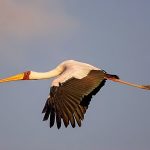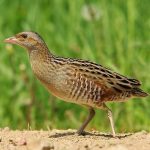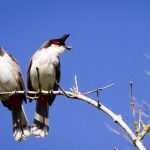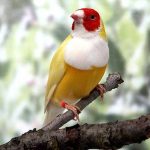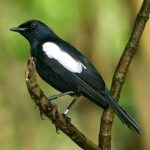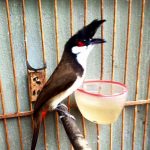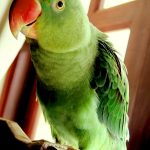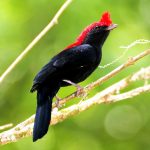Maguari stork
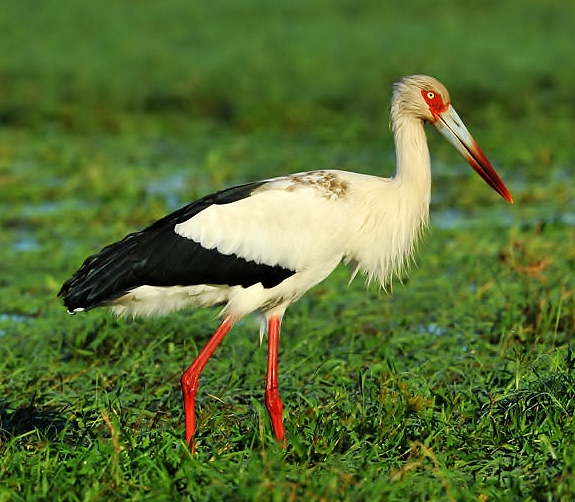
 |
| Photo by Aline Wolfer (Oiseaux d’Argentine) |
Common name:
maguari stork (en); cegonha-maguari (pt); cigogne maguari (fr); cigueña maguari (es); maguaristorch (de)
Taxonomy:
Order Ciconiiformes
Family Ciconiidae
Range:
This species is found throughout most of South America east of the Andes, from Venezuela to central Argentina, but is mostly absent from the Amazon basin and from north-eastern Brazil.
Size:
The maguari stork is 90-105 cm long and has a wingspan of 150-180 cm. They weigh 3,5-4,5 kg.
Habitat:
They are mostly found in freshwater wetlands, such as swamps, flooded pastures, reedbeds and rice fields, but also in ponds within savannas, cultivated fields and grasslands.The maguari stork is present from sea level up to an altitude of 2.500 m.
Diet:
These birds feed on a wide range of aquatic animals, including insects, frogs and tadpoles, fishes, crustaceans, lizards, snakes and aquatic rodents.
Breeding:
Maguari storks breed in May-November. They form loose colonies of 5-20 pairs, each nesting on a huge structure made of sticks and twigs and lined with grass. The nests can be placed on a small tree or scrub up to 6 m above the ground, on floating vegetation or on the ground within dense reedbeds, always in a place surrounded by water. The female lays 3-4 dull white eggs, which are incubated for 29-32 days. The chicks are fed by both parents and fledge 60-72 days after hatching, but only become fully independent 5-6 weeks later.
Conservation:
IUCN status – LC (Least Concern)
This species has a very large breeding range and in spite of declines in some parts of the range in recent years, the population is suspected to be stable in the absence of evidence for any declines or substantial threats.
